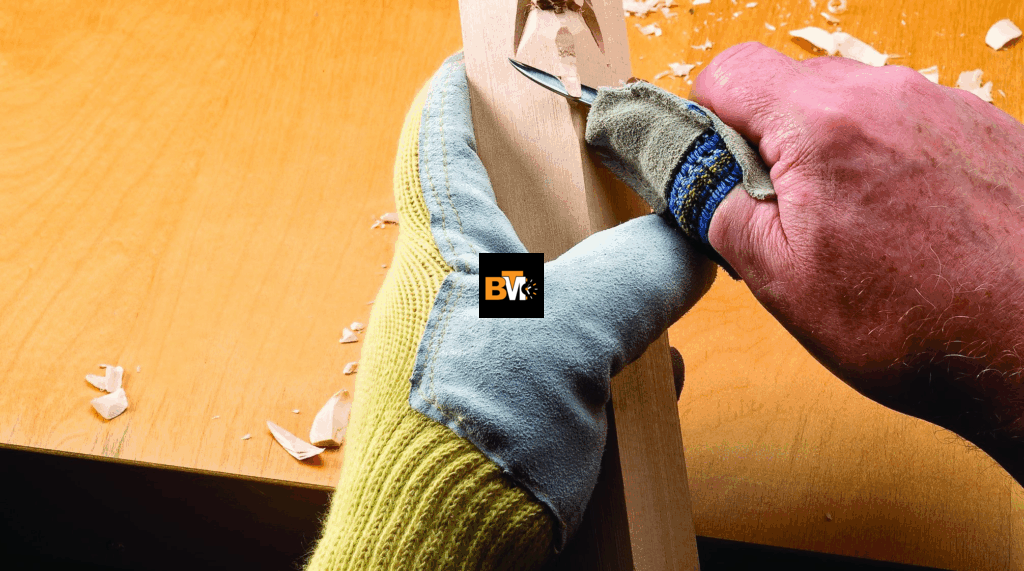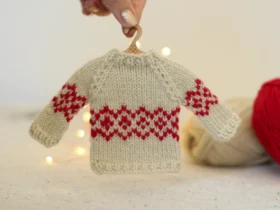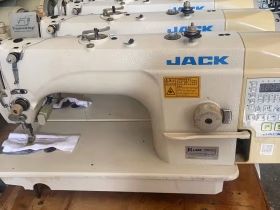Wood carving is a peaceful and creative hobby, but it’s not without its risks. Your hands are your most valuable tools, and protecting them is important. That’s where wood carving gloves come in. In this guide, we’ll help you understand everything about these gloves—from what they are to how to pick the best pair. Whether you’re a complete beginner or just looking for better safety, this article is your go-to resource.
What Are Wood Carving Gloves?
Wood carving gloves are specially designed gloves that help protect your hands while working with sharp tools like knives, chisels, and gouges. These gloves are made from materials that are resistant to cuts and abrasions. Their main purpose is to give you a layer of protection while still allowing you to move your fingers freely for detailed work.
Most wood carving gloves are made with high-performance fibers such as HPPE (High-Performance Polyethylene), Kevlar, or other materials that can withstand accidental slips of sharp blades. They help prevent injuries from minor cuts and scrapes that are common during wood carving projects. These gloves are often flexible and lightweight, so they don’t make your hands feel bulky or stiff, allowing you to maintain control over your tools.
Whether you’re working on a beginner project or a detailed sculpture, wood carving gloves are an important part of your safety gear.
Why Do You Need Gloves for Wood Carving?
Wood carving involves using sharp tools close to your fingers. Even if you’re careful, one slip of the knife can cause a serious injury. Gloves offer a safety net for those accidents that happen in a split second. Many carvers think they don’t need gloves because they’ve never been cut before—but it only takes one mistake.
Gloves designed for wood carving protect against cuts, scrapes, and even splinters from rough wood. They also make you more confident in your work. When you know your hands are protected, you can focus more on technique and less on fear of injury.
Using the right gloves can help prevent long-term hand injuries too. Over time, repeated exposure to vibrations and small shocks from carving can lead to hand fatigue. Some carving gloves are designed with padding or anti-vibration materials that reduce strain on your hands and wrists.
So, even if you’re a beginner or just working on simple whittling, wearing wood carving gloves is always a smart move.
How to Choose the Right Wood Carving Gloves
Picking the right pair of gloves for wood carving can make a big difference in both safety and comfort. There’s no one-size-fits-all glove. You should consider your level of experience, the tools you use, and the type of wood you’re working with.

Here are a few key points to keep in mind when choosing wood carving gloves:
Check the Material
One of the most important things to look at is the material of the glove. Gloves made from materials like Kevlar, HPPE, or stainless steel mesh are great choices. These materials are designed to resist cuts from sharp tools. Look for gloves with ANSI (American National Standards Institute) or EN388 ratings. These ratings tell you how well the glove can resist cuts, tears, and abrasions.
Cut-resistant materials like Dyneema and glass fiber are also excellent for beginners because they offer strong protection while keeping the glove lightweight.
Look for a Good Fit
A good fit is essential when it comes to wood carving gloves. If your gloves are too loose, you’ll have a hard time holding your tools. If they’re too tight, your hands will get tired quickly. Choose a size that fits snugly but still allows free movement of your fingers.
Check if the gloves come in multiple sizes and read the sizing chart carefully. A proper fit helps in both comfort and control, which are crucial for detailed carving work.
Comfort Matters
Comfort can make or break your carving experience. Gloves that are too thick, itchy, or stiff can distract you while working. Look for gloves with breathable material and moisture-wicking properties. This keeps your hands dry and comfortable, even during long carving sessions.
Some gloves also come with inner liners or padded palms to reduce hand fatigue. This feature is especially useful if you spend several hours carving or are working with hardwoods that require more effort to shape.
Top Features to Look for in Wood Carving Gloves
Not all gloves are created equal. Here are some important features that make a big difference in how effective and comfortable your wood carving gloves will be:
- Cut Resistance Level: Always choose gloves with a high cut-resistance rating. Level 5 is ideal for wood carving.
- Dexterity: You need to move your fingers freely. Gloves should be flexible enough to handle small tools and detailed work.
- Grip: A good grip helps you hold your tools safely, even if your hands are sweaty or the tool handles are smooth.
- Breathability: Gloves with breathable fabric prevent sweating and keep your hands comfortable.
- Durability: You want gloves that last. Look for materials that hold up well after many uses.
- Lightweight Design: Heavy gloves can make carving difficult. A lighter glove provides better control.
Having gloves with these features will give you a much better carving experience, especially if you are just getting started.
Are Cut-Resistant Gloves the Same as Wood Carving Gloves?
Cut-resistant gloves and wood carving gloves are similar but not always the same. Cut-resistant gloves are designed for general use in many industries, including kitchen work, construction, and mechanical jobs. These gloves focus on protecting hands from sharp objects and edges.
Wood carving gloves, on the other hand, are a specific type of cut-resistant glove made for fine, detailed work. They not only offer cut protection but are also designed to be flexible, breathable, and comfortable for long sessions.
While you can use general cut-resistant gloves for carving, it’s always better to choose ones specifically made for carving because they provide better control and are tailored to the unique needs of the hobby.
Best Types of Gloves for Beginners
If you’re new to wood carving, choosing the right type of glove can make the learning process much safer and more enjoyable. Here are a few beginner-friendly types that provide good protection without sacrificing comfort:

Level 5 Cut-Resistant Gloves
These gloves offer the highest level of cut protection available under EN388 standards. They are made with strong synthetic fibers like HPPE or Kevlar and are perfect for beginners because they give you peace of mind. You can focus on learning the craft without worrying about accidents.
They are often lightweight and flexible, making them a good all-around glove for different carving styles—whittling, chip carving, relief carving, and more.
Nitrile-Coated Gloves
These gloves have a thin nitrile coating on the palm and fingers. The coating improves grip and provides resistance against splinters and light cuts. They are less bulky than full cut-resistant gloves and give better finger control for delicate work.
While not as protective as Level 5 gloves, nitrile-coated gloves are good for lighter carving projects or when working with softwoods. They’re also more breathable, making them suitable for long use.
Can Kids Use Wood Carving Gloves Too?
Yes, kids can and should use wood carving gloves. In fact, it’s even more important for young carvers to use protective gear because they are still developing the skills needed to control sharp tools safely.
Many gloves are available in smaller sizes to fit younger hands. Look for gloves labeled as “youth size” or “XS.” Make sure they are snug but not too tight. Comfort and mobility are key, especially for kids just starting out. You can even find Level 5 cut-resistant gloves designed especially for kids.
Always supervise children while they are carving, and ensure they wear both gloves and eye protection to reduce the risk of injury.
Tips to Keep Your Gloves in Good Shape
Taking care of your gloves helps them last longer and keeps them effective. After each carving session, brush off any wood dust or chips. If your gloves get dirty, most cut-resistant gloves can be hand-washed or machine-washed on a gentle cycle—just check the label first.
Avoid exposing your gloves to extreme heat or direct sunlight for long periods, as this can weaken the fibers. Store them in a dry, cool place away from sharp objects.
Rotate your gloves if you carve often. Having two pairs allows one to rest and dry while you use the other. Proper care ensures your gloves stay strong and comfortable over time.
The Bottom Line
Wood carving is a wonderful hobby that combines creativity with skill. But to truly enjoy it and stay safe, you need the right gear—starting with a good pair of wood carving gloves. Whether you’re whittling for the first time or making intricate designs, gloves help protect your most valuable tools: your hands.
Look for gloves made with cut-resistant materials, a good fit, and plenty of comfort. Choose Level 5 cut-resistant gloves if you’re serious about safety, or go for nitrile-coated gloves for light and precise work. And don’t forget, even kids need protection if they’re trying out carving.







Leave a Reply